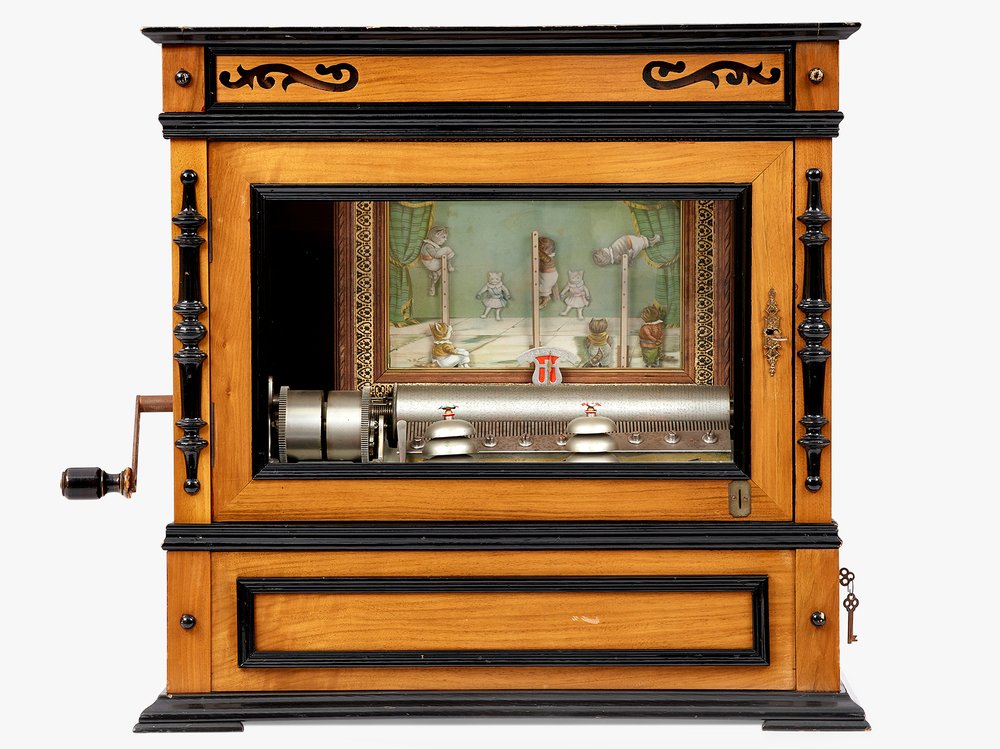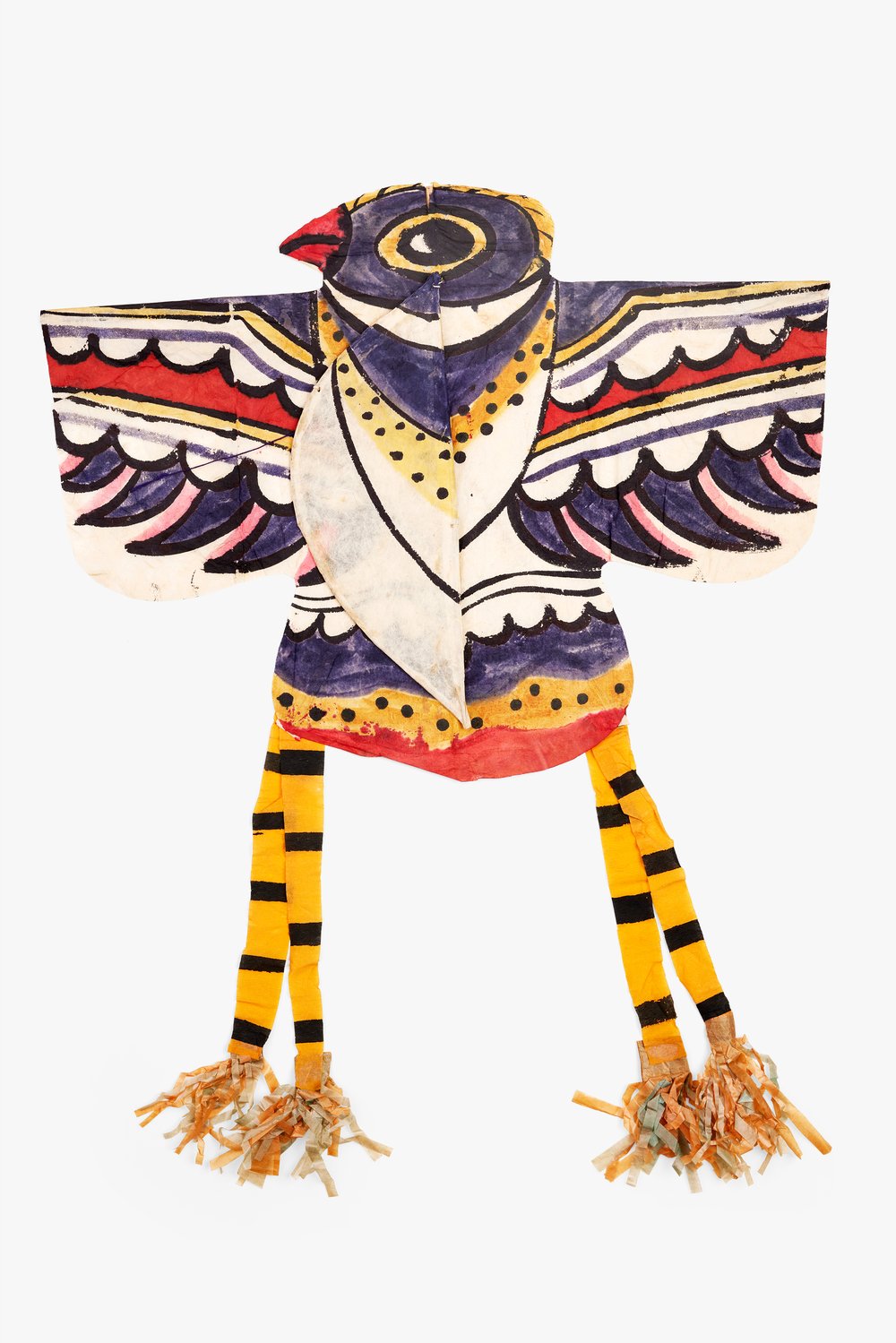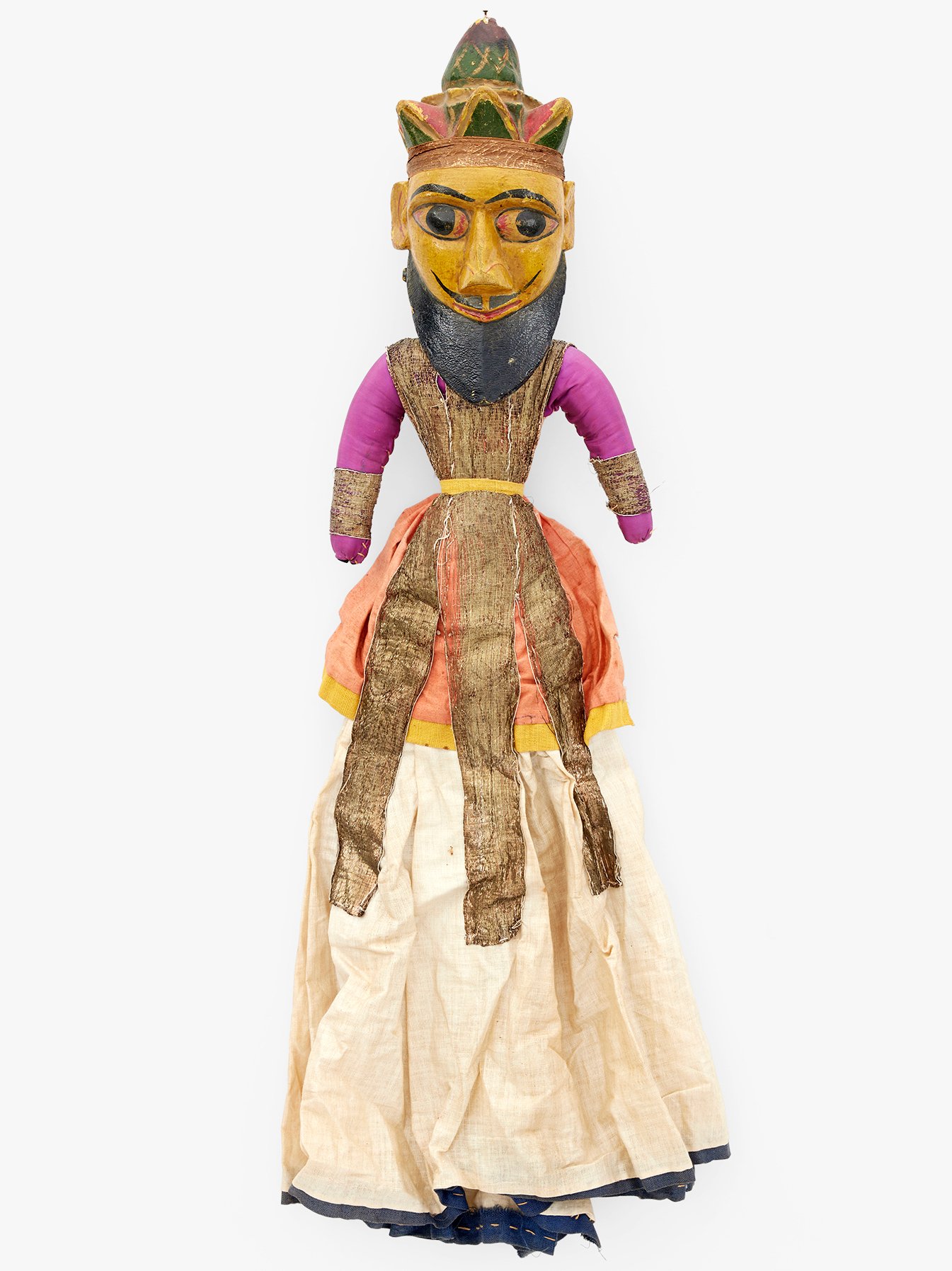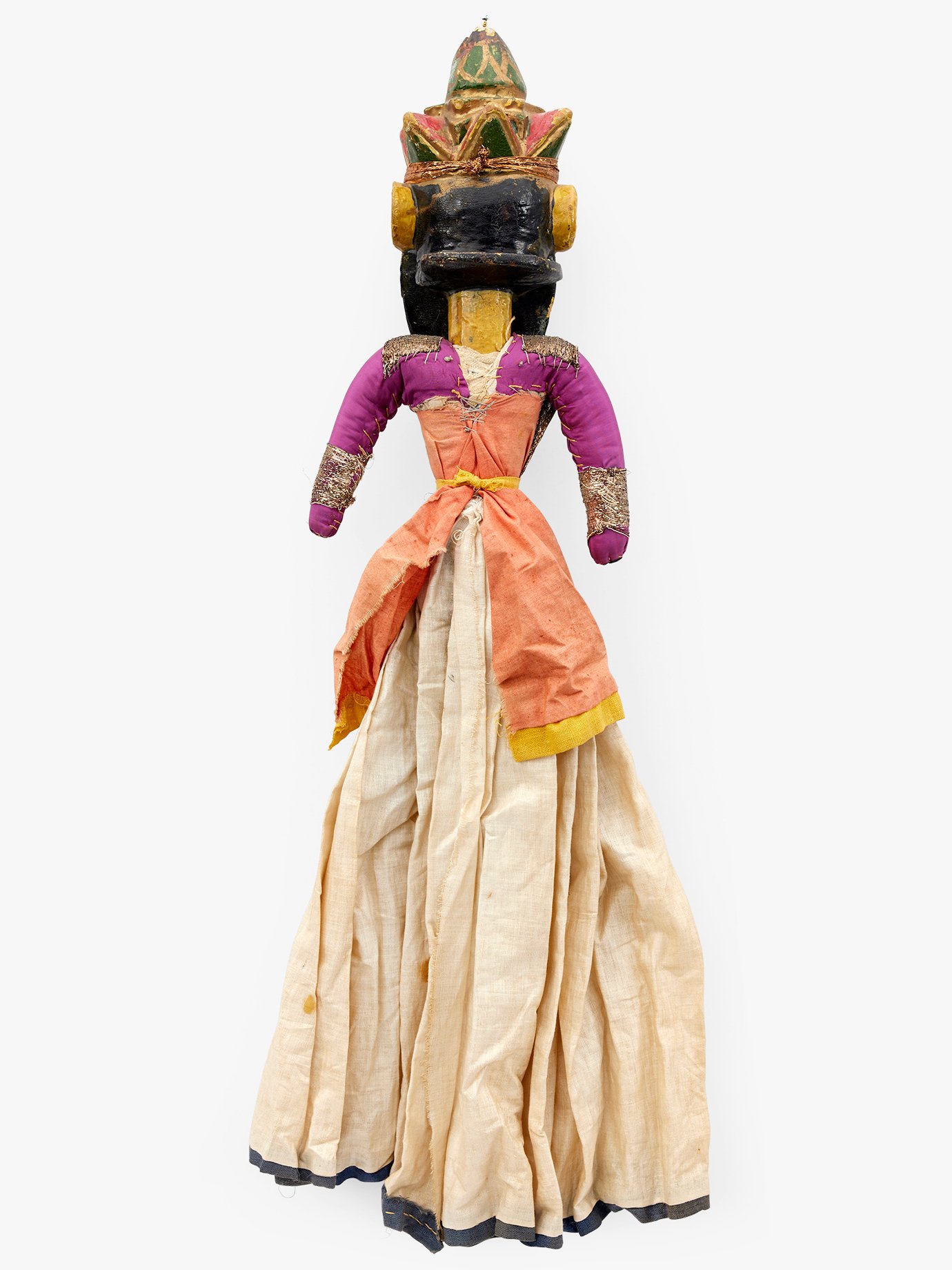Kathputli Puppet
n.d.
Puppets and puppet shows have long delighted viewers of all ages by combining storytelling with the illusion of bringing an inanimate object to life. This example comes from Rajasthan, India, where a tradition of string puppetry can be traced back as far as the 4th century BCE. In this example, a painted wooden head is paired with fabric garments, and the richly colored fabrics suggest the puppet is meant to represent a wealthy or powerful figure. Kathputli puppets (putli meaning doll and kath, wood) are usually sculpted and painted by the puppeteers themselves, and are composed of a head inserted on a short, thin torso of wood. The arms, cloth stuffed with cotton, hang and move freely on both sides of the body. Like this example, most kathputli do not have legs, and the puppets’ long skirts twirl when in motion. Perhaps inspired by their travels, the Eameses created several electronically-controlled puppet shows for the IBM Pavilion at the 1964 World’s Fair. In one of these, Sherlock Holmes in the Singular Case of the Plural Green Moustache, a puppet version of famed fictional detective Sherlock Holmes explained the yes-no logic of binary code—an essential aspect of IBM’s computers. In drawing on well-established traditions of storytelling and puppetry, the Eameses taught audiences about computers in a way that emphasized the technology’s familiar or relatable qualities, rather than its unfamiliar ones.
- Medium:Textile, wood, paint
- Dimensions:27 1/2 x 11 x 4 1/2 in. (69.9 x 27.9 x 11.4 cm)
- Origin:India
- Item:T.2019.2.43




